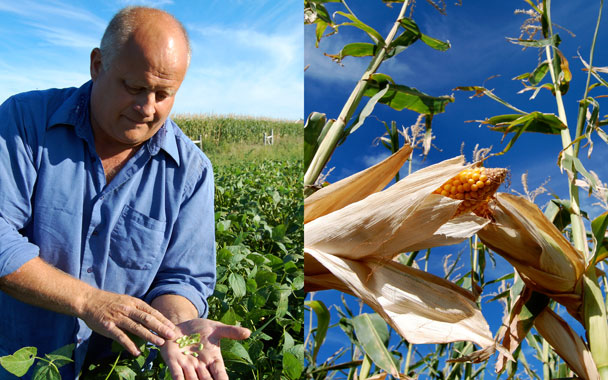Is anybody making money out there?
Last week’s post about the high price of Dale Hargens’ machinery, and his chronic debt, led one reader to ask, “When will Hargens be able to enjoy any profits and not have to plug them into expensive machinery?” The answer is both incredibly simple (“This year”) and incredibly complicated (“Never”).
For at least two months, Hargens has known that he is growing record corn and soybean crops. For the first time in his life, competing demand from feedlot operators, ethanol plants, industrial processors, and foreign markets is so strong that the overproduction that is often a consequence of high yields is not deflating the market. Yields are high. Prices are high. Knock on wood. If Dale Hargens can avoid a killer frost in the next three weeks, he is going to get rich ... quick.
I caught up with Hargens at a farm-machinery show in Fargo, North Dakota. He’s trying not to get ahead of himself, but he has his eye on a new corn planter. $100,000. I asked him what he intends to do if the bonanza comes in next month. “I’ll pay down my land loans. I’ll pay off my house mortgage and pay down the combine so I don’t have to worry about payments. I’m looking at a new tractor, maybe, but I’ll probably borrow money to buy the corn planter. I’ll max out my IRA this year. I’ll put a lot of money into my campaign.” (Hargens is Minority Leader of the South Dakota House of Representatives, and he is now running for his local state senate).
“I have to go to a meeting in California, so I’ll probably take my wife and make a vacation out of it, and we like to go to Las Vegas if we can, to the National Finals Rodeo.” That’s it. Dale is about to harvest the best crop of his life, and that’s how he plans to spend his money. “Do you ever think about going to Paris?” I ask. “Never been to Europe,” he answers, indifferently.
Much has been written over the last few years about cutting federal subsidies for millionaire farmers, but at this moment, when Dale is about to win a once-in-a-lifetime lottery, it is perhaps worthwhile to step back and look at Dale’s standard of living. He pushes some pretty big numbers through his bank account every year, for expensive machinery; for chemical fertilizer, pesticides and seed; for crop insurance; and for fuel. The trail of zeros and commas behind a one or two in his expense column can be daunting to an outsider. But as often as he hits the jackpot, he barely turns a profit. He just sold his home in Miller, South Dakota, for $84,000 and bought a new one for $130,000. “It’s twenty-two years old, and it would cost two hundred and sixty thousand dollars to build today,” he says proudly. He gets his health insurance through his wife’s job at the local rural water district. I ask, “Has there ever been a year when things got so bad that you thought you’d lose the farm?”
“Oh, yeah. From 2002 through 2006, the drought was so bad we didn’t even have crops to harvest. Four years ago, the bank wouldn’t loan me money to plant a crop. When you can’t grow a crop, disaster payments and crop insurance kick in, but they only pay about sixty-five percent of your proven yield.” What about retirement? I ask. “The land is my retirement plan. I can lease it out or sell it.”




 Pinterest
Pinterest


